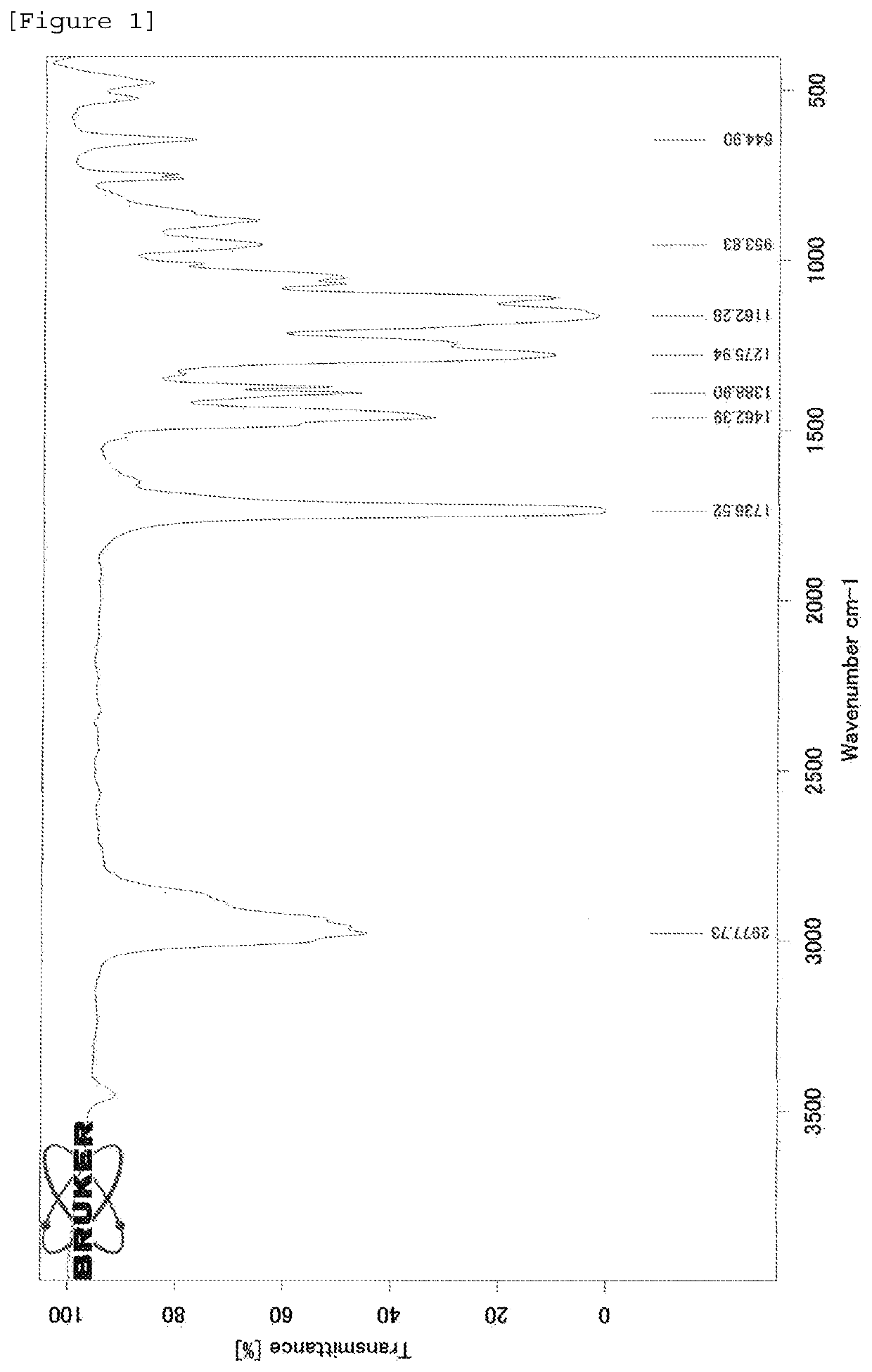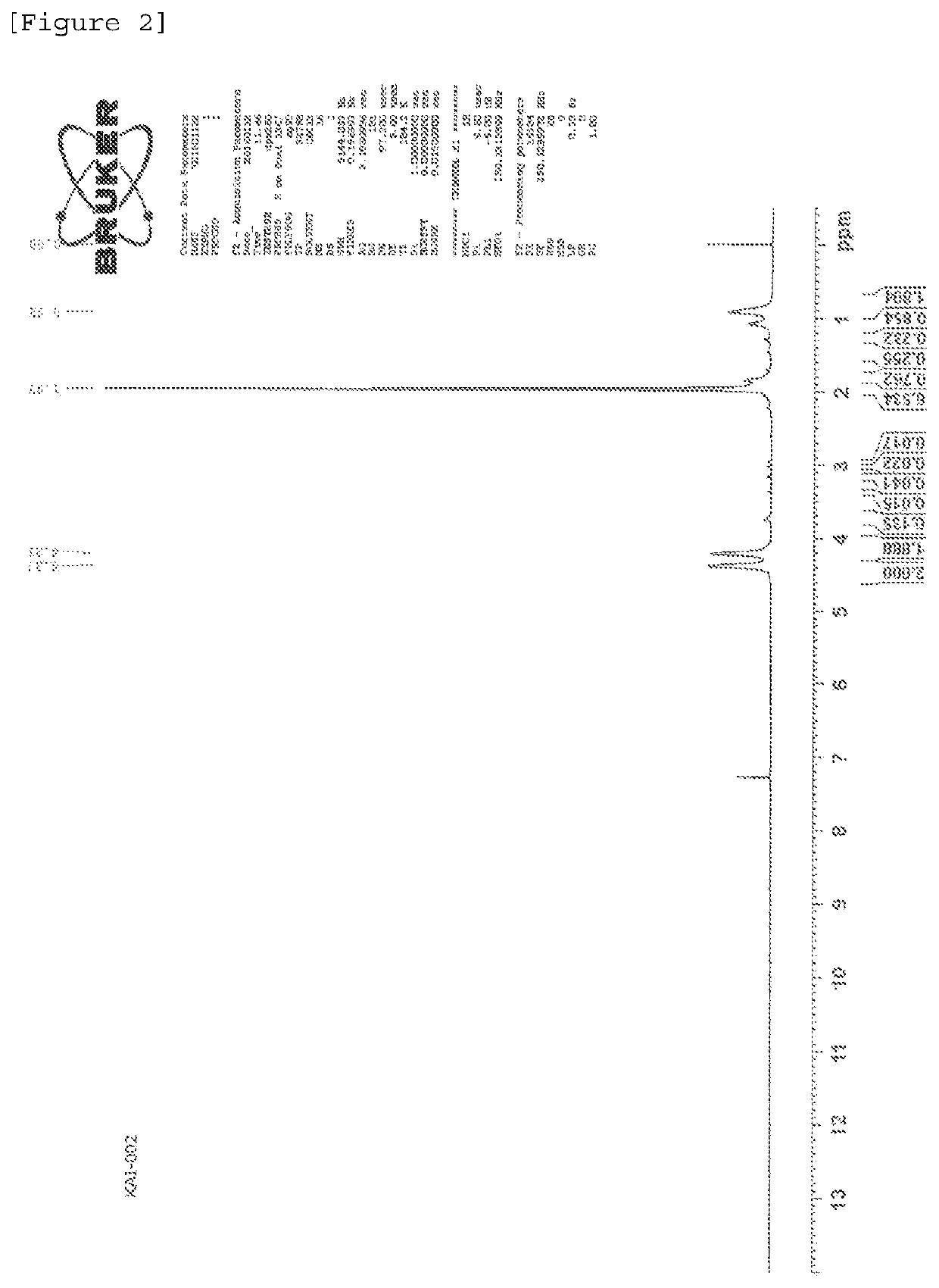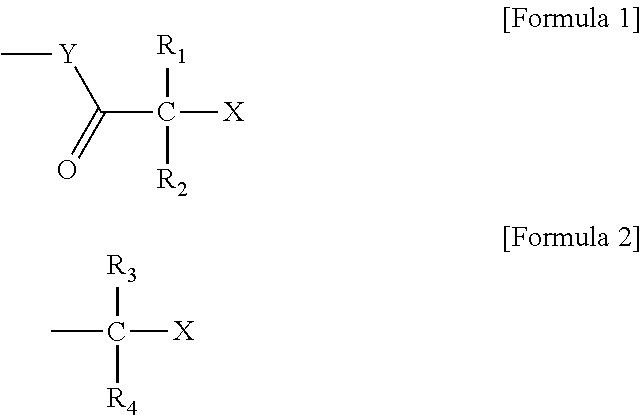Polymer production method and radical polymerization initiating group-containing compound
a production method and radical technology, applied in the field of polymer production methods, can solve the problems of inability to obtain polymer structures controlled, inability to produce polymers, short life of radicals, etc., and achieve high practical value, high safety, and industrial production
- Summary
- Abstract
- Description
- Claims
- Application Information
AI Technical Summary
Benefits of technology
Problems solved by technology
Method used
Image
Examples
example 1
[0111]In a reaction apparatus to which a stirrer, a reflux condenser, a thermometer, and a nitrogen-introducing tube were attached, 100.0 parts of 3-methoxy-N,N-dimethylpropaneamide (hereinafter, abbreviated as MDPA) as a solvent, 4.0 parts of ethyl 2-bromoisobutyrate as an organic compound of (2), 100.0 parts of methyl methacrylate (hereinafter, abbreviated as MMA) as a monomer of (1), and 3.0 parts of sodium iodide as an iodizing agent of (3) were charged, and the resultant mixture was warmed to 75° C. while nitrogen was bubbling to perform polymerization for 7 hours. The obtained polymer had a rate of polymerization of 95%, a number average molecular weight (hereinafter, abbreviated as Mn) of 7600, and a molecular weight distribution (weight average molecular weight / number average molecular weight, hereinafter, abbreviated as PDI) of 1.87. From the above results, it was ascertained that according to the production method of the present invention, a polymer can be obtained without...
example 2
[0114]Polymerization was performed for 7 hours in the same manner as the polymerization performed in Example 1 further adding 0.2 parts of N-iodosuccinimide (hereinafter, abbreviated as NIS) as a component of (4) specified in the present invention to the system in Example 1. Sampling was conducted at this point of time to find that the rate of polymerization was 68%, the Mn was 5200, and the PDI was 1.43. Thereafter, polymerization was performed for further 5 hours under the same conditions to find that the rate of polymerization reached up to 95%, the Mn was 8700, and the PDI was 1.47. From the comparison with the polymer obtained in Example 1, it was ascertained that by adding an N-iodo-based compound as a catalyst into the system, polymerization is controlled and the particle size distribution of the polymer which is obtained becomes narrow.
example 3
[0115]Polymerization was performed in the same manner as in Example 2 further adding 1.0 part of triethylamine as a compound having an organic base, the compound being a component of (4) specified in the present invention, to the system in Example 2. Sampling was conducted after 7 hours of polymerization to find that the rate of polymerization reached up to 91%, the Mn was 7800, and the PDI was 1.61. From the comparison with Example 2, it was ascertained that the polymerization speed is increased, and from the comparison with Example 1, it was ascertained that a polymer the particle size distribution of which is controlled to some extent can also be obtained in the case where triethylamine was added.
PUM
| Property | Measurement | Unit |
|---|---|---|
| temperature | aaaaa | aaaaa |
| temperature | aaaaa | aaaaa |
| temperature | aaaaa | aaaaa |
Abstract
Description
Claims
Application Information
 Login to View More
Login to View More - R&D
- Intellectual Property
- Life Sciences
- Materials
- Tech Scout
- Unparalleled Data Quality
- Higher Quality Content
- 60% Fewer Hallucinations
Browse by: Latest US Patents, China's latest patents, Technical Efficacy Thesaurus, Application Domain, Technology Topic, Popular Technical Reports.
© 2025 PatSnap. All rights reserved.Legal|Privacy policy|Modern Slavery Act Transparency Statement|Sitemap|About US| Contact US: help@patsnap.com



